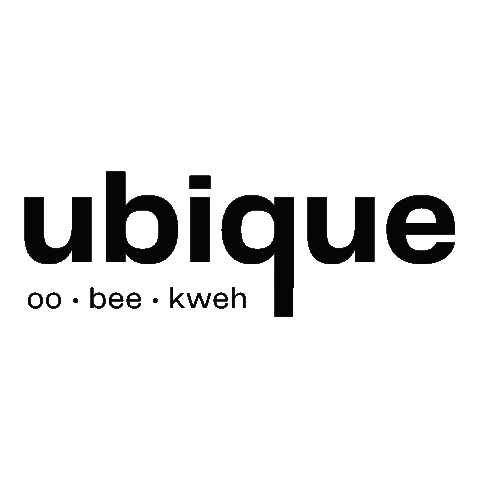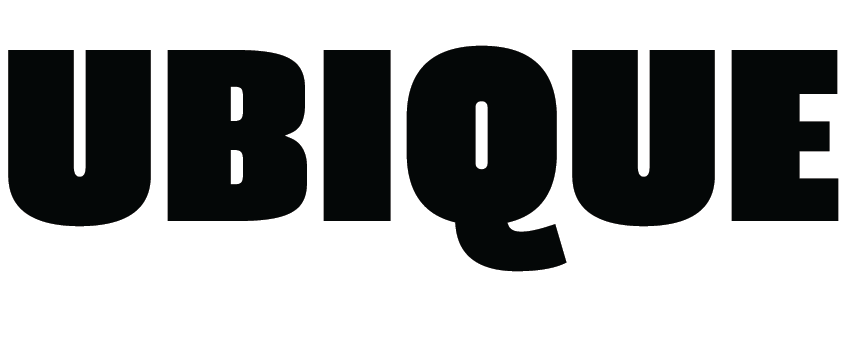History of UBIQUE
By Pat Bui and Mason Johns
In 1941 Mr L. R. Brookes (who, incidentally, the former subschool is named after) was installed as Principal of University High School, and the burden fell on him to lead the school through some of its most difficult years during the 2nd world war. In 1942 more than 200 students from Macrob were accommodated for, after their school was taken for military purposes. The US Army set up on the school’s oval, which forced the Year Sevens and Eights to move to Princes Hill. Mr Brookes successfully led the school out of the war, and in 1946, along with recapturing the school oval, set about invigorating morale by instating a student-led magazine. Before the production of the first edition, the school held a competition to determine a satisfactory title. The name ‘Ubique’, submitted by N. Newmark, was chosen.
The word ‘Ubique’ is a Latin word that means ‘Everywhere’. The foundation of the name is displayed by the magazine’s original title - Ubique: Everywhere we Probe.
Since its institution in the 1940s, Ubique has changed dramatically, reflecting a changing student body and general social shifts. It began in the 1940s as a very official magazine, with a newspaper-like presentation dedicated to documenting the goings-on of the school. Its second iteration as Post-Ubique shifted some focus away from the school towards pop culture, taking on a more magazine-like appearance. Most recently, Ubique was relaunched online, posting every fortnight, and combining more broad out-of-school topics with content about the school.
Ubique: Everywhere we Probe
Ubique was launched in its original format Ubique: Everywhere We Probe, by Mr Brookes, who aimed to establish a school student-led magazine. It cost 3 pennies (a little less than one dollar, adjusted) and was the school’s first true school magazine (The Record had been around since the 1910s, but that was more of a round-up magazine, similar to Essence today). In his Principal’s Forward, Mr Brookes presents with ‘cautious hopes’ to the pupils the first edition of Ubique. He intends the magazine to be an agency well suited to, ‘crystallizing into fact the theory all good democrats fervently believe - freedom of speech and expression, and a free press’. The contents of this first issue document the issues of the time. In an article entitled Blackfellow Boomerang, one student recounts the visit of Mr Onus, the President of the Aborigines National League, who ‘is giving lectures to show that the Australian Aboriginal is not as backward as many believe’. The contents of the magazine also reflect a greater emphasis on sport. The front-page article is called ‘Sport is dead, long live sport’, and there are rundowns of the significant recent sporting occurrences in the school.
At this stage, Ubique’s influence grew quickly. Print media was more important, and Ubique held a central role in the communication between students. Student’s weren’t able to communicate online, so the magazine was a principal way for students to learn about what was happening in the school.
During the late 1960s, as Vietnam tensions rose and antiwar sentiment spread quickly amongst the inner city suburbs, a radical magazine called Ubique Underground was produced and distributed at University High. Students produced Monthly editions and distributed them ‘underground’, along with posters, hung up around the school. In response, police were called in, and some students were expelled. After the first few optimistic and lively post-war years, Ubique: Everywhere we Probe continued essentially unchanged, despite a changing global attitude, until its conclusion in 1970.
Post-Ubique
In 1993, after a two-decade hiatus from the eyes of the school, Ubique was relaunched as Post Ubique. The magazine retained its original printed form but assumed a more casual appearance. Since the cessation of Ubique: Everywhere We Probe, global culture had moved on significantly. Since the 70s, coffee was first truly popularised globally, CERN created the worldwide web, and popular music had moved on from Bob Dylan and The Beatles to Nirvana and Madonna. These shifts were represented in Ubique, too. The magazine’s new form allowed its creators to be more free-willed with its contents and gave them scope to experiment. In this issue of Post-Ubique, the various contributors use the issues to publish a wide breadth of articles, which provides the magazine with an eccentric feel. The magazine has shed its formality, with letters to the editor replaced by dream interpretation and sport correspondence replaced with short stories. It had evolved to suit the wants of the students of the time.
By 2003, Post-Ubique had been in production for ten years. It had undergone multiple new publishing schedules and aesthetic changes. Still, it had sometimes struggled to find a footing in the school in a changing media landscape, vastly different from the landscape in which Ubique first appeared in post world war two. For the first time, more than 50% of people in Australia had internet access in their household, and students could consume media and communicate online. On this note, Ubique took its second hiatus, and the school was left without a student-run magazine once more.
Ubique Online
Ubique was relaunched in October of 2012 as Ubique Online. 4 editions were posted that year. Along with the webpage, students created a twitter page for the magazine. The website can be accessed here, and four articles can still be found: Opinion: Dangers of Disney, Luke on Flybz, FAQs and About us.
After its 2012 relaunch, Ubique was quiet for a few years until in 2015, when Ubique was relaunched with a new website, in no small part due to the determination of Ms Costelloe and the English Department. This new medium allowed the magazine to foster participation amongst students and aided it in creating a cultural centre for the school.
Since its revival in 2015, there have been some good and some bad years as Ubique has tried to find its place in a crowded media jungle and an ever-changing school culture. Ubique has been adapting, though, too. It has found a grounding in the school with popular new additions like Teacher Tag and Movie/Music of the issue. Thanks to the three new editors Mily, Shan and Ruwan, and their consistent posting schedule, Ubique is experiencing a renaissance after a quiet 2019. Readership numbers swelled to over 2000 during lockdown.
The Future of Ubique
Since its induction into the school’s consciousness in 1946, Ubique has had periods of great flourishing and some years of silence, acting as a symbol of a changing international culture and a barometer of the sentiment of the University High School community. It has helped the school grow and left lasting impacts on the students of the school.
Its study can help us understand what life was like for previous students of this school. As for the future, let’s hope that in another 75 years, Ubique will still be in production, and students will be able to look back to now and understand a little bit about what life was like for us. And in the words of Mr Brookes, at the very least, ‘The publication of this newspaper is a most important incident in the history of University High School’.

